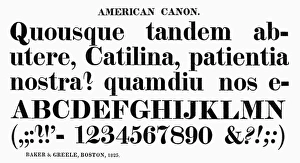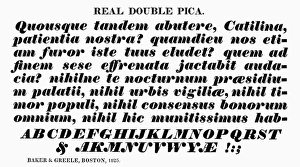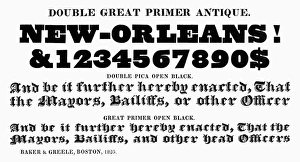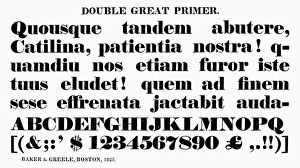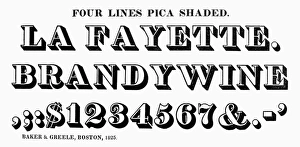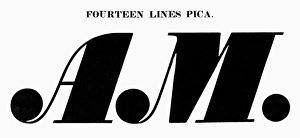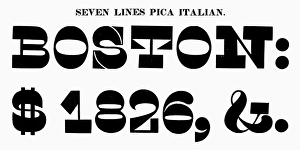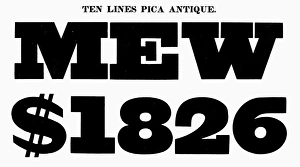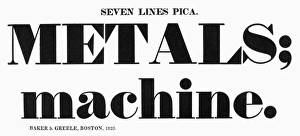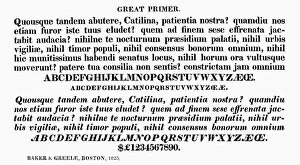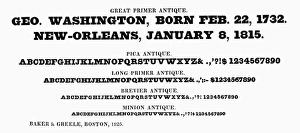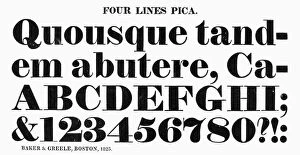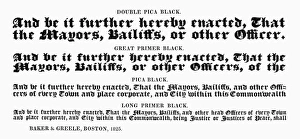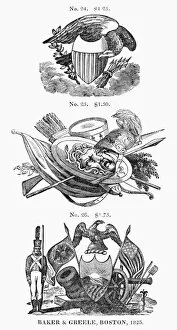Greele Collection
"Greele: A Journey Through Typography in 1825" Step back in time to the year 1825, where typography was an art form that captivated the imagination
All Professionally Made to Order for Quick Shipping
"Greele: A Journey Through Typography in 1825" Step back in time to the year 1825, where typography was an art form that captivated the imagination. Baker & Greele, a renowned catalog of typefaces, showcased a wide array of stunning options for printers and designers alike. Among their offerings was "Greele, " a typeface that left its mark on American canon. With its elegant curves and precise lines, this typographical gem became a staple in the world of printing during this era. From the delicate Six Lines Pica to the bold Double Great Primer Antique, each variation had its own unique charm. The Real Double Pica stood tall with its grandeur, while Ten Lines Pica exuded sophistication. The Fourteen Lines Pica commanded attention with its larger-than-life presence, while Seven Lines Pica Italian added a touch of flair and elegance to any composition. Meanwhile, Ten Lines Pica Antique brought forth a sense of timeless beauty. But it was not just about size or style; even shading played a role in typography's enchanting dance. The Four Lines Pica Shaded created depth and dimension within words themselves. As you peruse through these historic pages from Baker & Greele's catalog, you can't help but marvel at how typography has evolved over time. These typefaces were more than just letters on paper; they were works of art meticulously crafted by skilled artisans who understood the power of visual communication. So let us celebrate Greele - an embodiment of creativity and innovation in typography during 1825 - reminding us that even amidst technological advancements today, there is still something magical about those early days when ink met paper to create something truly extraordinary.

